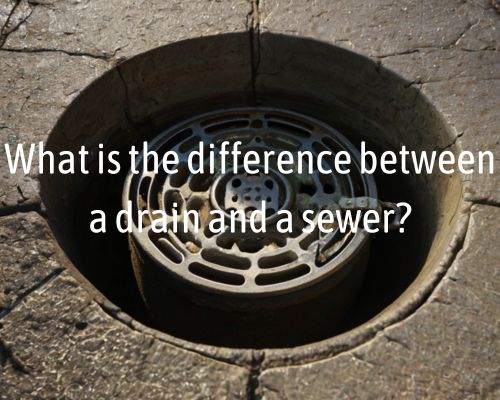
Simple explanations and key distinctions
Understanding the distinction between a drain and a sewer is crucial for managing your home’s water and waste systems effectively.

A drain generally refers to a conduit designed to funnel water, such as rainwater, away from specific areas to prevent flooding.
By contrast, a sewer is specifically meant for transporting human waste and wastewater from homes to treatment facilities.
Drains and sewers play distinct roles and are essential components of urban infrastructure.
While drains often handle stormwater, directing it to nearby waterways without treatment, sewers carry waste to sewage treatment plants where it is processed and treated before being safely discharged.
This separation ensures that rainwater and human waste are managed in environmentally responsible ways.
You may be responsible for maintaining both systems if they’re on your property. Understanding their differences will help you ensure that both drainage and sewage systems function correctly, preventing unwanted disruptions and potential environmental harm. Visit website for more on this.
Understanding Drains and Sewers
Grasping the essential differences and functions of drains and sewers aids in effective maintenance and repair. This section outlines these distinctions in detail.
Functions and Definitions
A drain is a pipe that carries wastewater away from a single property, such as a home or business. These pipes handle water from sinks, bathtubs, and other domestic sources.
Typically, it is the homeowner’s responsibility to maintain and repair these pipes.
A sewer is a larger network that transports wastewater from multiple properties. It includes sewerage systems that direct the waste to treatment facilities.
Unlike drains, sewers handle a larger volume of water and waste, particularly from toilets. Due to its scale, the local council or municipal authorities generally maintain sewers.
Types and Components
Drains can vary in type based on their function.
Stormwater drains handle rainwater, while wastewater drains manage sewage from household activities.
Components include pipes, traps, and clean-outs that help in the efficient removal of water.
Lateral drains connect individual household drains to the main sewer. This pipeline runs outside your property but is critical for an effective drainage system.
Usually, property owners maintain lateral drains until they meet the public sewer.
Sewers form a complex network that includes sewer pipes, treatment plants, and various pumping stations.
These components ensure that wastewater is effectively managed and treated before it’s released back into the environment. Understanding this network helps in appreciating the complexity and the necessity for regular maintenance.
Environmental Impact and Management
Effective management of drains and sewers is crucial for minimizing pollution and protecting water resources. Understanding their environmental impact helps ensure sustainable infrastructure and appropriate waste treatment.
Pollution and Protection
Pollution from stormwater drains primarily comes from run-off and rainwater that collects various contaminants from urban areas.
Common pollutants include chemicals, rubbish, and human waste. These elements often enter natural waterways directly, as stormwater systems are designed to prevent flooding by redirecting water run-off swiftly.
To mitigate this, regulations like the Protection of the Environment Operations Act 1997 enforce penalties for contaminating waterways.
Environmental protection measures include installing filtration systems in drains and running public campaigns to reduce the disposal of hazardous substances.
Waste Treatment and Infrastructure
Sewers carry a mix of sewage and liquid waste from homes and industries to treatment plants.
Municipal sewers involve a more comprehensive infrastructure for waste treatment. This involves sewage treatment plants that process the wastewater to remove contaminants before returning it to the environment.
Key stages include primary, secondary, and tertiary treatments, each targeting different types of waste.
Properly managed sewer systems are essential for preventing health hazards and protecting water quality.
Investments in infrastructure enhance the capacity and efficiency of these systems. This ensures they meet both current and future municipal needs. For more on these, just visit website.





